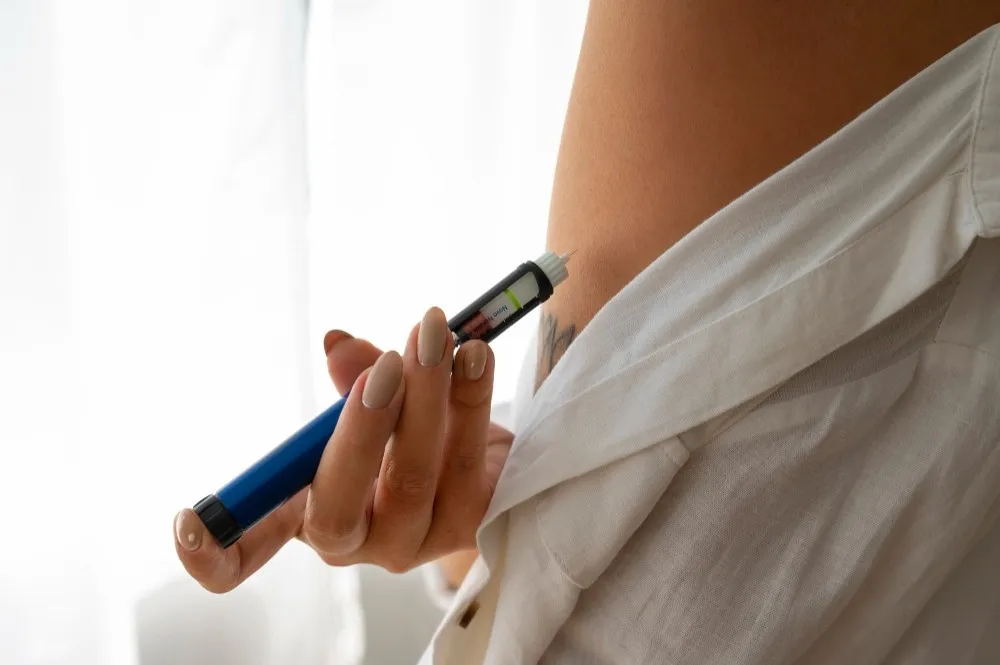Do you need to rest after a cortisone injection? It's a question many patients ask after receiving this popular treatment for inflammation and joint pain. While cortisone injections can offer significant relief, understanding the recovery process is crucial for achieving the best results. In this post, we'll explore the key things you should know about post-injection care, including whether rest is necessary and how to ensure your body heals properly. Keep reading.
Do You Need to Rest After a Cortisone Injection?
Yes, you need to take at least 2 days of rest after a cortisone injection gradually increasing your activity levels. For the initial few days, avoid strenuous activities to avoid irritation or strain on the affected area. However, the advice for rest can vary based on several factors:
-
Your specific condition
-
The type and dosage of injection used
-
Your overall fitness and activity levels
-
Your pain and irritability levels
-
Developed side effects
For example, if you have a joint injection in your:
|
Injection Site/Area |
Rest Duration |
Activity Advice |
|
Knee |
For 24-48 hours |
Give rest to your knee for 1 to 2 days. |
|
Shoulder |
For 24 hours |
Give rest to your affected area for 24 hours and avoid strenuous activities for 7 days. |
|
Hip |
For at least 24-48 hours. |
Slowly return to your everyday activities, but if you feel pain, rest more. |
|
Foot |
For at least 24-48 hours. |
Choose gentle walking only. |
|
Spine |
Take 24–48 hours of rest |
Avoid heavy lifting and twisting motions for some days to prevent pressure on the spine. |
Moreover, in the case of:
-
Low-moderate dosage: 24 hours of rest may be enough. Engage in light activities post the first day.
-
High Dosage: Take rest for 48–72 hours. Avoid intense activities for many days to minimize side effects and allow the body to adjust to the drug.
Note: Always follow the post-care instructions of your doctor based on your medical issues and areas treated for the best results.
Why is Rest Necessary After a Cortisone Injection?
Resting after receiving a steroid injection can be beneficial for many reasons:
-
Prevents Additional Stress
Alleviate additional stress or pressure on the injected area as it can interrupt the healing process.
-
Maximizes Effectiveness
Gives enough time for the cortisones to show its pain-relieving effects without irritating the area.
-
Reduces Complication Risks
Light or excessive physical activities directly after the cortisone injections can significantly increase the risk of inflammation or infection.
-
Prevents Systemic Absorption
Stops the cortisones from being absorbed by the blood or other body issues, making it be in the affected area.
-
Minimizes Chondrotoxicity
Research reports that rest reduces the risk of chondrotoxicity (cartilage damage) which is one of the cortisone injection's side effects.
After the cortisone starts showing its effect, you can gradually resume your normal activities.
When Can You Resume Everyday Activities After Cortisone Injections?
You can resume everyday activities in this manner:
-
Walking: Short-distance walking is generally safe after 24-48 hours. However, if the injection was in your knee, foot, or hip, limit walking to light activity initially.
-
Gym: Wait for at least 3-5 days to return to the gym. But, the rest duration can vary based on the area injected and what type of exercise to perform. So, ask your doctor.
-
Running: Resume running after 5-7 days if you had steroid injections in your knee, ankle, foot, or hip. However, this advice can differ based on the specific condition, tolerance level, and overall health.
-
Driving: If you feel weak, drowsy, blurred vision, or numb, completely avoid driving. If you are diabetic, keep a check on your blood sugar levels for at least 2 days before choosing to drive.
What Should You Avoid After a Cortisone Injection?
Avoid these things:
-
Strenuous Physical Activities: For 24-48 hours avoid these activities to prevent inflammation and irritation at the treated site.
-
Hot Showers or Baths: Hot water can contribute to excessive blood flow to the impacted area, leading to discomfort or swelling.
-
Alcohol Intake: Alcohol can interrupt the recovery process and raise the chances of side effects such as infection and swelling.
-
Injection Site Massaging: Avoid massaging the treated area to prevent irritation or any other risk of complications.
-
Overexertion of the Treated Area: Do not overuse the treated areas such as muscles or joints to avoid worsening symptoms or slowing down the healing process.
-
Pain or Discomfort: If you experience pain, redness, warmth, and swelling, consult your doctor immediately.
-
Ignoring Follow-Up With Doctor: Always see a doctor to monitor how your body is responding to a cortisone injection for proper healing.
Cortisone Injection Side Effects
Though side effects of a cortisone injection are relatively rare, rest can minimize those potential effects. However, after the administration of the shot, you may temporarily experience:
Common Side Effects:
-
Soreness
-
Swelling
-
Redness
-
Pain
-
Irritation
Severe Side Effects
-
Blurred vision
-
Prolonged insomnia (difficulty falling asleep)
-
Persistent high blood sugar
-
Severe joint infection
What to Do: Rest, apply an ice pack to the area, take over-the-counter pain medications if needed, and get plenty of sleep. For severe reactions, consult your doctor immediately.
Final Thoughts
Do you need to rest after a cortisone injection? While rest isn’t always mandatory, giving your body the time it needs to adapt can enhance the treatment's effectiveness and reduce potential discomfort. However, how long to rest will depend on the condition being treated, the type and dosage of injections, tolerance level, and overall health. Avoid strenuous activities, driving, running, or gym for 24-48 hours after the treatment. In some cases, you may experience temporary side effects like pain, swelling, redness, or irritation, so rest is necessary. In case you feel severe pain or discomfort, consult the professionals.
Also Read: How Long Is Immune System Compromised After Steroids
Frequently Asked Questions
Is walking good after cortisone injection?
Walking short distances is usually safe, but limit or take rest if you have cortisone injections in your leg, ankle, hip, or knee.
Do you need to take time off work after cortisone shots?
Yes, you should take 1-2 days off work, particularly if you have to be physically involved in your job. However, if you can rest while at work, you can resume your work.
Does a cortisone shot go through your whole body?
Yes, a small amount of cortisone can go through your blood and other body parts. So, diabetics need to keep a watch over their blood sugar levels for 1-2 days after the treatment.
What not to mix with cortisone?
Avoid anticoagulants, anticonvulsants, diabetes medication, NSAIDs, HIV medication, or some vaccinations with cortisones as interaction may occur, reducing cortisone's effectiveness.
Why can you only have 3 cortisone shots in a lifetime?
This is because several injections can cause weakening of the tendons, thinning of the cartilage, and even discoloration of the skin.
Reviewed by







